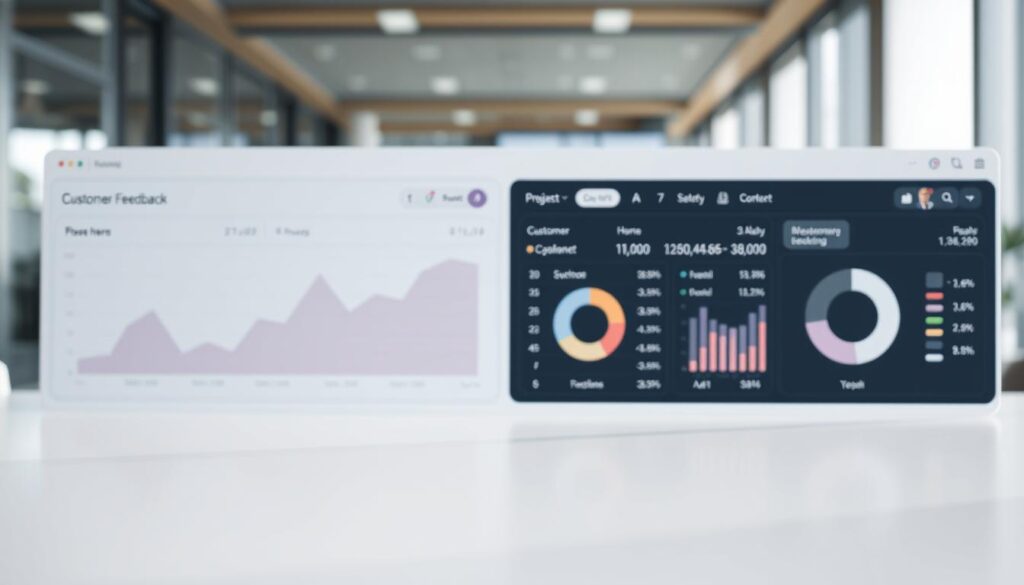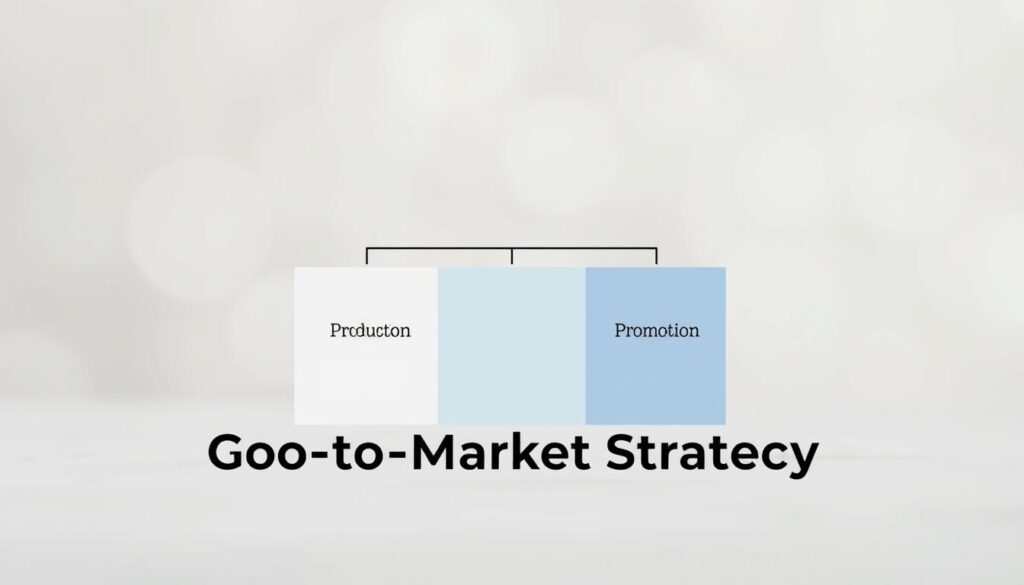In today’s crowded business landscape, simply having a great product isn’t enough. Companies need a clear roadmap to capture attention and convert interest into lasting success. This is where a well-designed go-to-market (GTM) approach becomes essential—a strategic blueprint that aligns every aspect of launching offerings while addressing real customer needs.
Modern organizations operate in environments where competitors often offer similar features or pricing. Standing out requires more than flashy campaigns—it demands precision in identifying untapped opportunities and tailoring solutions to specific audience segments. Effective strategies combine thorough market analysis with creative positioning to highlight unique value.
This guide explores how businesses can build sustainable advantages by rethinking their launch tactics. From analyzing competitor weaknesses to optimizing distribution channels, differentiation starts with understanding what truly drives customer decisions. The frameworks shared here help teams move beyond generic playbooks to create tailored, results-driven plans.
Key Takeaways
- A strong GTM strategy aligns product launches with market demands and customer pain points
- Competitive analysis reveals opportunities to highlight unique product advantages
- Effective differentiation requires balancing data insights with creative positioning
- Pricing and distribution models play critical roles in market penetration
- Sustainable success comes from adapting strategies to evolving industry trends
Introduction to Go-to-Market Differentiation
The digital age has transformed how organizations establish relevance in crowded industries. Nearly 63% of businesses now face at least three direct competitors offering comparable solutions, according to a 2023 industry analysis. This reality makes strategic positioning not just beneficial—it’s existential.
Overview of the Ultimate Guide
This resource offers a blueprint for cutting through market noise. It combines three critical elements: data-driven market evaluation, competitor behavior patterns, and audience-specific messaging frameworks. Companies learn to identify gaps competitors overlook while aligning offerings with unmet needs.
The approach works across business stages—whether launching startups or expanding into new regions. As one industry leader notes:
“Winning organizations treat every product release as a first impression. They plan launches like chess masters—three moves ahead.”
Why Differentiation Matters in Today’s Market
With 76% of consumers researching multiple options before purchasing, generic value propositions fail. Organizations must answer one question decisively: Why choose us?
| Company Focus | % of Organizations | Key Challenge |
|---|---|---|
| Product-first | 37% | Translating features into benefits |
| Sales-first | 26% | Sustaining customer loyalty |
The table above reveals why balanced strategies outperform single-focus models. Successful companies blend product excellence with clear communication about tangible outcomes. They also adapt tactics as markets shift—a necessity in industries where 42% of buyers change preferences quarterly.
The Pillars of a Successful Go-to-Market Strategy
Building a standout approach requires more than intuition—it demands structured analysis and precise positioning. Successful organizations anchor their strategies in four interconnected pillars that transform data into actionable plans. These elements work together to identify opportunities, craft compelling narratives, and deliver measurable impact.
Market Analysis and Competitive Insight
Market analysis starts with mapping industry trends, customer behaviors, and growth potential. Teams that analyze emerging patterns spot gaps competitors miss—like underserved demographics or overlooked regional demand. This process turns raw data into strategic blueprints for targeted campaigns.
Competitive intelligence goes beyond surface-level comparisons. It involves dissecting rivals’ pricing models, customer retention tactics, and weaknesses in their service ecosystems. One tech executive notes:
“Understanding competitors’ blind spots reveals where your solution can dominate.”
Value Proposition and Product Positioning
A sharp value proposition answers two questions: What problem does your product solve, and why does it matter? Effective statements focus on specific outcomes—like reducing operational costs by 30% or cutting onboarding time in half. Clarity here builds instant relevance.
Positioning completes the equation by framing offerings against alternatives. For example, a project management tool might emphasize AI-driven automation when rivals focus on basic collaboration features. This distinction guides messaging across channels, ensuring consistency from ads to sales pitches.
Leveraging go to market differentiation in Your Strategy
Mastering strategic positioning requires blending analytical rigor with creative execution. Modern organizations achieve this by integrating cutting-edge tools that decode customer behavior patterns and industry shifts. These methods transform raw data into actionable blueprints for sustainable growth.
Key Components of Differentiation
AI-driven analytics now power advanced research methods, revealing hidden opportunities in saturated sectors. Predictive modeling identifies emerging trends, while granular segmentation uncovers niche audiences competitors overlook. One tech CEO observes:
“The companies winning today treat data like a compass—it guides every strategic pivot.”
Effective approaches balance logic with emotional resonance. Neuromarketing techniques measure subconscious reactions to messaging, while A/B testing refines value propositions. This dual focus ensures offerings address practical needs while building authentic connections.
Implementation demands anticipating rival moves through game theory principles. Brands that map competitor weaknesses can craft counterstrategies protecting their advantages. For example, a SaaS company might preempt price wars by emphasizing unique workflow integrations.
Consistency across touchpoints seals the deal. From social media to sales calls, every interaction must reinforce core benefits. Teams that align messaging with customer journey stages see 3x higher conversion rates than those using generic pitches.
Defining Your Target Audience for Market Success
Precision targeting separates market leaders from companies stuck guessing. Organizations that map their ideal customer segments see 47% higher conversion rates than those using broad-stroke approaches, according to recent SaaS industry data.
Identifying Customer Segments
Effective segmentation starts with three layers: demographics, behavioral patterns, and unmet needs. Teams analyze factors like company size, technology adoption rates, and decision-making hierarchies. One logistics firm increased pipeline velocity by 60% after grouping prospects by solution urgency and budget flexibility.
Advanced tools now track hidden indicators—like how often prospects visit pricing pages or engage with competitor content. These signals help prioritize high-potential accounts. As noted in CRM strategy guides, behavioral data reveals what buyers truly value.
Building Buyer Personas
Personas transform abstract data into relatable profiles. A cybersecurity company might create “Security Sam”—a CTO needing breach prevention tools that integrate with legacy systems. Details matter:
- Lists key challenges faced daily
- Documents preferred communication channels
- Identifies who influences final decisions
These profiles guide everything from ad copy to sales scripts. Teams using detailed personas report 35% shorter sales cycles, as messaging directly addresses specific pain points.
Crafting Compelling Brand Messaging and Value Propositions
Cutting through market noise demands more than catchy slogans—it requires messaging that resonates emotionally while delivering concrete solutions. Brands that articulate their unique worth in simple terms build lasting connections, turning casual browsers into loyal advocates.
Creating a Unique Messaging Framework
Effective frameworks start with a razor-sharp value proposition. Take Instantly’s approach: “10x your leads, meetings, and deals.” This statement solves a problem (low conversions), highlights differentiation (scalable outreach tools), and creates urgency (immediate results).
Strategic messaging balances rational arguments with emotional triggers. A cybersecurity firm might pair data encryption statistics with stories about protecting family memories. As one marketing director notes:
“Your message should feel like a handshake—firm enough to command respect, warm enough to invite trust.”
Aligning Brand Voice Across Channels
Consistency turns fragmented interactions into cohesive experiences. Whether crafting tweets or sales emails, maintain:
- Tone that matches audience expectations (professional for LinkedIn, conversational for TikTok)
- Core value pillars repeated in 80% of content
- Visual language complementing written messages
Companies using unified voices across marketing channels see 68% faster brand recognition according to 2024 media studies. Adaptation matters—a blog post might dive deeper into technical specs than an Instagram caption, but both should echo the same central theme.
Optimizing Pricing and Distribution Approaches
Your route to customers matters as much as your product’s price tag. Companies that align pricing strategies with distribution efficiency create self-reinforcing systems—where accessibility boosts demand, and smart margins fund expansion.

Developing a Competitive Pricing Model
Modern pricing strategies blend psychology with data science. Economic value estimation measures what buyers will pay based on measurable benefits—like time saved or revenue gained. Perceived value pricing taps into emotional drivers, positioning products as premium solutions.
Dynamic models now adjust in real-time using AI. A retail executive explains:
“We change prices 15,000 times daily based on competitor moves and inventory levels—it’s like algorithmic judo.”
Three factors separate winners from strugglers:
- Regular competitor price benchmarking
- Customer willingness-to-pay surveys
- Cost-to-serve analytics
Select Strategic Distribution Channels
Distribution channels determine whether products collect dust or fly off shelves. Leading firms use a hybrid approach:
- Direct e-commerce for premium segments
- Marketplaces like Amazon for mass appeal
- Local partners for hard-to-reach regions
Predictive analytics prevent overstocking and stockouts. One logistics director notes their system reduced delivery delays by 73% using weather pattern forecasts. The goal? Create paths to purchase that feel frictionless—whether buyers shop online at midnight or in stores at noon.
Developing a Results-Driven Sales Plan
Sales excellence begins with selecting frameworks that mirror your operational strengths. The right model acts as a force multiplier—turning product potential into measurable revenue through strategic alignment. Organizations that match their approach to buyer behaviors see 53% faster deal closures compared to those using one-size-fits-all tactics.
Choosing the Right Sales Model
Four proven frameworks dominate modern sales strategies. Self-service models thrive for straightforward purchases like SaaS tools, letting customers buy independently. Inside sales teams excel with medium-priced products requiring guided demos—think CRM platforms or HR software.
Field sales shine for enterprise deals where personal relationships drive seven-figure contracts. Though resource-intensive, this approach delivers 4x higher average deal sizes. Channel partnerships offer cost efficiency but demand careful partner training to maintain brand standards.
“Your sales engine should flex to fit customer needs, not force buyers into rigid processes,” notes a tech sales director.
Effective sales planning balances three factors: product complexity, team bandwidth, and profit margins. A cybersecurity startup might combine self-service trials with inside sales nurturing, while medical device firms often rely on field experts. The goal? Build pipelines that feel frictionless to buyers while maximizing revenue per effort.
Integrating Marketing Initiatives With Sales Strategies
Unified campaigns outperform fragmented efforts by 58% in revenue growth, according to recent MarTech studies. Aligning marketing and sales creates cohesive journeys where every touchpoint reinforces core messages and drives measurable outcomes.
Coordinating Omnichannel Campaigns
Modern buyers interact with brands across 8+ channels before purchasing. Successful teams synchronize marketing activities like SEO blogs and paid ads with sales outreach timelines. For example, launching a LinkedIn ad series alongside personalized email campaigns boosts engagement by 41%.
Inbound and outbound tactics work best when layered. Content marketing builds trust over time, while cold emailing provides instant feedback on messaging effectiveness. One SaaS founder shares:
“Our sales team closes deals 22% faster when marketing warms up leads through targeted webinars first.”
Utilizing Data for Campaign Optimization
Advanced analytics transform guesswork into precision. Attribution models reveal which campaigns drive conversions—whether a TikTok video or trade show booth. Teams then allocate budgets to high-performing channels while refining underperforming ones.
Real-time dashboards track metrics like email open rates and demo sign-ups. This data helps sales prioritize hot leads while marketing adjusts ad spend. Companies using these systems see 35% higher ROI on marketing strategies within six months.
Using Customer Feedback and Risk Assessment to Refine Your Approach
Smart companies treat customer insights like GPS—they course-correct before getting lost. By blending real-time feedback with proactive risk evaluation, businesses create strategies that adapt faster than competitors. This dual approach turns potential vulnerabilities into opportunities for growth.

Establishing Feedback Loops
Effective feedback systems act as early warning systems. A SaaS company reduced churn by 28% after implementing weekly sentiment analysis across support tickets and social media. Their process included:
- Automated surveys triggered after key user actions
- Quarterly focus groups with power users
- AI analysis of feature request patterns
“The best insights come from observing what customers do, not just what they say,” notes a CX leader at a Fortune 500 firm.
Risk assessment completes the picture. Teams that map market shifts and operational bottlenecks build contingency plans before crises hit. For example, a fintech startup averted a compliance disaster by stress-testing their payment infrastructure against regulatory changes.
Combining these elements creates a self-improving strategy. Regular feedback reviews identify blind spots, while risk simulations prepare teams for multiple futures. The result? Organizations that pivot faster, fail smarter, and outmaneuver rivals.
Innovative GTM Moments and Real-World Examples
Real-world success stories prove the power of strategic execution. Companies that combine bold ideas with disciplined processes often redefine their industries. Let’s examine how leaders turned vision into measurable impact.
Startup Success Stories and Case Studies
TaxJar dominated sales tax compliance by focusing on education. Their GTM strategy prioritized SEO-driven guides and webinars, positioning them as experts for SMEs. Slack’s viral growth came from a freemium model—users loved the product so much, they invited entire teams.
Oatly’s U.S. expansion targeted coffee shops and eco-conscious millennials. By aligning with barista culture, they turned oat milk into a lifestyle choice. These companies didn’t just sell—they solved specific problems for customers.
Lessons Learned From Industry Leaders
Apple’s 2007 iPhone launch set the standard for disruption. Exclusive carrier partnerships and “the internet in your pocket” messaging made competitors obsolete overnight. As one executive noted: “We didn’t create a phone—we created a new category.”
Modern leaders balance scalability with authenticity. Whether launching a product or entering a new market, alignment between messaging and delivery remains critical. For more innovative GTM approaches, study brands that blend creativity with data-driven decisions.
FAQ
How does market analysis strengthen differentiation strategies?
Comprehensive market analysis reveals unmet customer needs and competitor weaknesses. Brands like HubSpot use these insights to position products where competitors underdeliver, creating measurable advantages through data-driven adjustments to pricing models and distribution channels.
What makes buyer personas critical for GTM success?
Detailed buyer personas align product development with specific pain points. Salesforce excels at this by mapping decision-making processes across customer segments, enabling targeted campaigns that address real challenges rather than generic demographics.
Why does omnichannel coordination impact campaign performance?
Synchronized messaging across platforms boosts conversion rates by 27% (Google Data). Companies like Nike maintain consistent brand voice from social media to retail stores, reinforcing value propositions through every customer interaction point.
When should companies revise pricing strategies post-launch?
Regular pricing reviews become essential when market share plateaus or new entrants emerge. Adobe’s shift to subscription models demonstrates how ongoing analysis of customer feedback and competitive moves can unlock recurring revenue streams.
Which metrics prove differentiation strategy effectiveness?
Track customer acquisition cost ratios against competitors and premium pricing acceptance rates. Microsoft Teams used net promoter score differentials and enterprise adoption rates to validate its workplace collaboration differentiation against Slack.
How do startups validate unique value propositions quickly?
Rapid prototype testing through platforms like Product Hunt provides real user feedback. Canva leveraged early-access communities to refine its design democratization premise before scaling, achieving 85% faster market penetration than traditional SaaS models.



